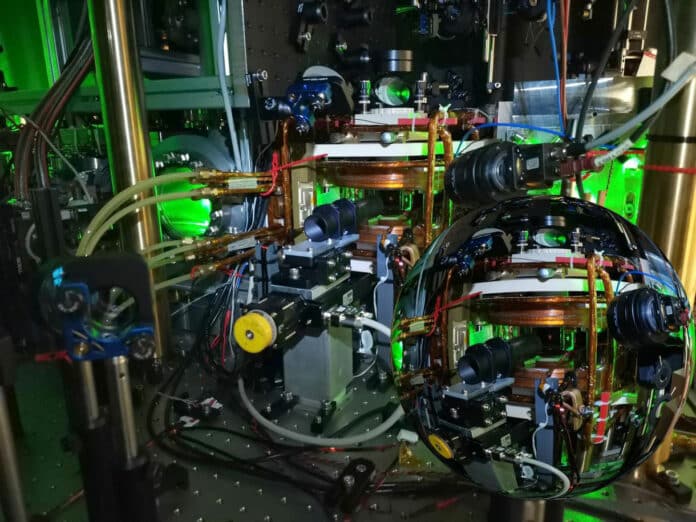The description of subsequent dynamics and related questions in cosmology requires an understanding of the quantum fields of the standard model and dark matter in curved spacetime. Even the reduced problem of a scalar quantum field in an explicitly time-dependent spacetime metric is a theoretical challenge. Hence a quantum field simulator can lead to insights.
Researchers from Heidelberg University have created an effective, manipulable spacetime in a laboratory experiment. They were able to generate a whole family of curved universes in their study of ultracold quantum gases to test various cosmological theories and compare them with the predictions of a quantum field theory model.
Prof. Dr. Markus Oberthaler, a researcher at the Kirchhoff Institute for Physics at Heidelberg University, said, “It is conceivable, however, that our Universe was curved in its early phase. Therefore, studying the consequences of curved spacetime is a pressing question in research.”
In this study, scientists demonstrated a quantum field simulator in a two-dimensional Bose–Einstein condensate. It consists of a cloud of potassium atoms cooled to just a few nanokelvins above absolute zero.
Prof. Oberthaler explains, “The Bose-Einstein condensate is a perfect background against which the smallest excitations, i.e., changes in the energy state of the atoms, become visible. The form of the atomic cloud determines the dimensionality and the properties of spacetime on which these excitations ride like waves. In our Universe, there are three dimensions of space and a fourth: time.”
In the experiment by Heidelberg physicists, the atoms are contained in a thin layer. Due to the two-dimensional nature of space, the excitations can only propagate in two spatial directions. In addition, the atomic cloud in the final two dimensions is remarkably malleable, making it conceivable to realize curved spacetimes. The Bose-Einstein condensate’s wavelike excitations can propagate at different rates depending on how accurately the atoms interact.
Prof. Dr. Stefan Flörchinger said, “For the waves on the condensate, the propagation speed depends on the density and the interaction of the atoms. This allows us to create conditions like those in an expanding universe.”
A quantum field theoretical model was developed to compare the experimental results quantitatively.
Celia Viermann, the primary author of the study said, “Using the quantum field simulator, cosmic phenomena, such as the production of particles based on the expansion of space, and even the spacetime curvature can be made measurable. Cosmological problems normally take place on unimaginably large scales. To be able to study them in the lab specifically opens up entirely new possibilities in research by enabling us to test new theoretical models experimentally.”
Markus Oberthaler, whose research group is also part of the STRUCTURES Cluster of Excellence at Ruperto Carola, said, “Studying the interplay of curved spacetime and quantum mechanical states in the lab will occupy us for some time to come.”
Journal Reference:
- C. Viermann, M. Sparn, N. Liebster, M. Hans, E. Kath, Á. Parra-López, M. Tolosa-Simeón, N. Sánchez-Kuntz, T. Haas, H. Strobel, S. Stefan Flörchinger, M.K. Oberthaler: Quantum field simulator for dynamics in curved spacetime. Nature (9 November 2022). DOI: 10.1038/s41586-022-05313-9
